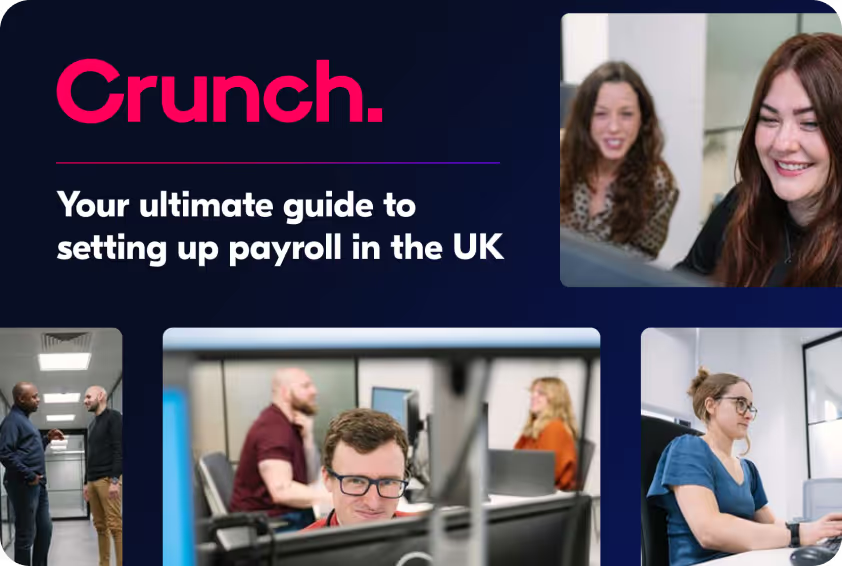Understanding maternity pay is essential for self-employed women in the UK. As it presents a unique set of challenges, distinct from those faced by employed women.
Unsurprisingly this issue often throws up a degree of uncertainty in women who run their own businesses. Due to the less reliable nature of self-employed work, and having a lot more to organise by yourself. As opposed to having a company HR department to assist you as a full-time employee would.
In this article we’ll try to get clear on how Maternity Allowance works for the self-employed. So you can confidently access this critical financial support for women who manage their own businesses during one of the most significant times of their lives.
By examining the eligibility criteria, calculation methods, and application process, we will offer key pointers and guidance to help self-employed women effectively plan and prepare for their maternity period.
{{cta-sole-trader-crunchone}}
Understanding Maternity Allowance
What is Maternity Allowance?
Maternity Allowance is a benefit designed to ease the financial strain during maternity for those who don't have the luxury of employer-provided maternity pay.
It's a recognition of the unique circumstances faced by self-employed women. Unlike traditional employees, these women don't have a straightforward path to maternity pay.
Maternity Allowance steps in to fill this gap, so the joy and excitement of motherhood isn't overshadowed by financial concerns.
Who is eligible?
As a self-employed woman, you're eligible if you've been registered as self-employed for at least 26 weeks during the 66 weeks leading up to your baby's due date. It’s the government's way of ensuring you're actively engaged in self-employment.
However, there's more – it's also dependent on your contributions to the system. You need to have paid Class 2 National Insurance contributions for at least 13 of those 66 weeks. This criterion is in place to confirm your investment in the UK’s social security system, which in turn supports you during maternity.
Calculation of Maternity Allowance
There are two different calculations for Maternity Allowance depending on how meet the aforementioned eligibility criteria. Here’s how it breaks down:
The standard calculation
Firstly, there's a straightforward calculation method. If you meet the eligibility criteria, you're likely to receive either 90% of your average weekly earnings or a fixed rate of up to £184.03 per week.
This allowance is available for up to 39 weeks. The amount you receive depends on which of these two figures is lower. Essentially, this approach ensures that the allowance you receive is in line with your usual income, providing a fair and balanced financial support.
Reduced rate for limited contributions
Then there’s the reduced rate. If you haven't paid enough in Class 2 National Insurance contributions, you might still qualify for Maternity Allowance, but at a reduced rate. This rate ranges between the minimum threshold of £27 and the maximum of £184.03 per week.
It’s a sliding scale, dependent on the number of weeks you’ve contributed to National Insurance. This provision is particularly important because it offers some level of support to those who might not have been able to contribute fully, ensuring that more self-employed women can access financial help during their maternity period.
Maternity Leave considerations for the self-employed
Not having access to conventional maternity leave does present a few challenges to Self-employed women. As we mentioned at the beginning, there’s usually no HR team or company based support network you can access. Which can mean any problems that may affect your work/business/clients are less likely to be buffered by other staff.
However, there is a silver lining. During the Maternity Allowance period, self-employed women have the flexibility to work up to 10 days without affecting their benefits. These are known as 'Keeping In Touch' (KIT) days.
This flexibility is significant as it allows women to maintain a connection with their business, ensuring they can keep up with essential tasks or opportunities, without the worry of losing their financial support. It's a thoughtful provision that acknowledges the dynamic nature of self-employment, where stepping away from work completely might not always be feasible.
Furthermore, there's an additional consideration for women who are involved in unpaid work for a business owned by their spouse or civil partner. In such scenarios, these women may be eligible for a reduced rate of Maternity Allowance. This aspect of the allowance recognises the often unseen contributions to family-run businesses and provides some financial support during the maternity period.
These considerations underscore the importance of providing and organising tailored support that respects the distinctive nature of each different self-employed woman’s work.
{{tax-guide}}
Financial planning and support
Effective financial planning during maternity is a critical step for self-employed women, especially given the variability in income that often accompanies self-employment.
Here are key strategies and support options to consider:
Forecast and budget - Start by forecasting your income during the maternity period. Since income can fluctuate, prepare a budget based on a conservative estimate of your earnings. This will help manage expenses and allocate funds for necessities.
(Expense tracking features in Crunch Sole Trader and Ltd Company packages include payment help with budgeting)
Savings plan - If possible, build a savings buffer in the months leading up to your maternity leave. This reserve can help cover periods when income might be lower than usual.
Explore insurance options - Consider if any insurance policies you hold, like income protection insurance, could provide support during this time.
Seek financial advice - Professional financial advice can be invaluable. An advisor can help tailor a financial plan to your unique business model and personal circumstances.
Employment and Support Allowance (ESA) - If you find that you're not eligible for Maternity Allowance, explore the option of applying for Employment and Support Allowance. ESA is designed to offer financial help to those who are unable to work due to illness or disability, which can include complications related to pregnancy.
Government and local support - Look into any additional government or local support schemes available for self-employed individuals during maternity. These can vary, so it's important to stay informed about what assistance is available in your area.
Support that’s right for you
Gaining a clear understanding of Maternity Allowance is absolutely crucial for self-employed women. In order to plan for this vital period of rest and development for both you and your family.
It's essential to carefully consider the aspects eligibility, calculation, planning so you can access the support that you are rightfully entitled to.
Remember, each situation is unique. Seeking personalised financial advice ensures tailored support for your individual journey through motherhood and self-employment.


.svg)

.svg)



.webp)





.avif)









